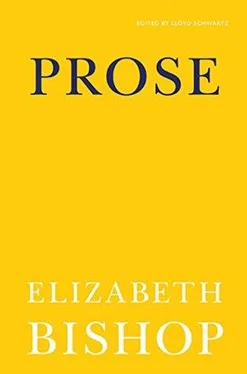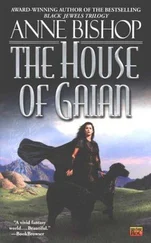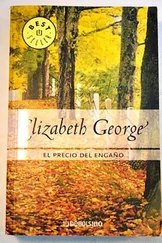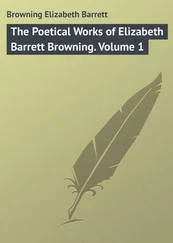Of course it was the birds going South. They were very high up, a fairly large sort of bird, I couldn’t tell what, but almost speck-like, paying no attention to even the highest trees or steeples. They spread across a wide swath of sky, each rather alone, and at first their wings seemed all to be beating perfectly together. But by watching one bird, then another, I saw that some flew a little slower than others, some were trying to get ahead and some flew at an individual rubato; each seemed a variation, and yet altogether my eyes were deceived into thinking them perfectly precise and regular. I watched closely the spaces between the birds. It was as if there were an invisible thread joining all the outside birds and within this fragile net-work they possessed the sky; it was down among them, of a paler color, moving with them. The interspaces moved in pulsation too, catching up and continuing the motion of the wings in wakes, carrying it on, as the rest in music does — not a blankness but a space as musical as all the sound.
The birds came in groups, each taking four or five minutes to fly over; then a pause of two or three minutes and the next group appeared. I must have watched them for almost an hour before I realized that the same relationships of birds and spaces I had noticed in the small groups were true of the whole migration at once. The next morning when I got up and went to the window they were still going over, and all that day and part of the next whenever I remembered to listen or look up they were still there.
It came to me that the flying birds were setting up, far over my head, a sort of time-pattern, or rather patterns, all closely related, all minutely varied, and yet all together forming the migration, which probably in the date of its flight and its actual flying time was as mathematically regular as the planets. There was the individual rate of each bird, its rate in relation to all the other birds, the speed of the various groups, and then that mysterious swath they made through the sky, leaving it somehow emptied and stilled, slowly assuming its usual coloring and far-away look. Yet all this motion with its effect of precision, of passing the time along, as the clock passes it along from minute to minute, was to result in the end in a thing so inevitable, so absolute, as to mean nothing connected with the passage of time at all — a static fact of the world, the birds here or there, always; a fact that may hurry the seasons along for us, but as far as bird migration goes, stands still and infinite.
Notes on Timing in His Poetry
It is perhaps fanciful to apply the expression timing to poetry — race horses, runners, are timed; there is such a thing as the timing of a crew of oarsmen, or a single tennis-stroke — it may be a term only suited to physical motions. But as poetry considered in a very simple way is motion too: the releasing, checking, timing, and repeating of the movement of the mind according to ordered systems, it seems fair enough to admit that in some way its discipline involves a method of timing, even comparable to that used for literal actions. For me at least, an idea of timing in poetry helps to explain many of those aspects of poetry which are so inadequately expressed by most critics: why poets differ so from each other; why using exactly the same meters and approximate vocabularies two poets produce such different effects; why some poetry seems at rest and other poetry in action. Particularly in referring to Father Hopkins, the most intricate of poets technically and most taxing emotionally, does some such simplified method of approach seem necessary.
The most general meaning of timing as applied to any particular physical activity is co-ordination: the correct manipulation of the time, the little duration each phase of the action must take in order that the whole may be perfect. And the time taken for each part of an action is decided both by the time of the whole, and of the parts before and after. (This sounds involved, but can be made quite clear, I think, by picturing for a minute a crew of men rowing a shell, and considering the enormous number of tiny individual motions going to each stroke, to each man, and the whole shell.) The whole series together sets up a rhythm, which in turn enables the series to occur over and over again — possibly with variations once it is established.
Just so in poetry: the syllables, the words, in their actual duration and their duration according to sense-value, set up among themselves a rhythm, which continues to flow over them. And if we find all these things harmonious, if they amalgamate in some strange manner, then the timing has been right. This does not mean that a monotonous, regularly beating meter means good timing — duration of sense and sound each play a part, I believe, nearly equal, and sense is the quality which permits mechanical irregularities while preserving the unique feeling of timeliness in the poem.
I suppose that the most characteristic feature of Hopkins’ poetry is that a great part of it is in “sprung rhythm.” Such a departure from the verse traditions of three hundred years must be indicative of a desire or necessity of expressing different sorts of rhythm, involving different sorts of timing from those we find in other poetry. I cannot go into a full explanation of “sprung rhythm” here — both because it is a complicated subject and because I don’t know enough about it, — but enough must be said so that the importance of its timing and its resultant peculiarities may be illustrated. (For simple explanations of sprung rhythm see Hopkins’ own Preface to his poems, and Chapter VI, The Craftsman, in his biography by G. F. Lahey, S.J.) The most obvious thing about it is that the stress is considered as always falling on the first syllable of the foot, and the foot may be monosyllabic or followed by one, two or three weak syllables — even a greater number for special effect. The rhythm is thus unified, but mixed, and flexible, something in the manner of the Greek “logaoedic.” In ordinary running rhythm we are accustomed to the variation of reversed feet, dactylls, etc., which if repeated gives us the effect of counterpointing — the original rhythm running underneath the superimposed rhythm. In “sprung rhythm” the rhythm felt corresponds to that of the counterpointing in running rhythm — minus the original underlying rhythm. It must be added, too, that all feet are assumed to be of equal length or strength, and the inequalities common to English are naturally made up by pause or stressing, according to the sense, or indication.
From this much I think it is evident that verse based entirely upon sprung rhythm, or sprung and running rhythms mixed, will have a very different quality about its co-ordination — maintaining the rhythmic beat customary to poetry, with an enormous increase in the variations possible for setting it up. Take, for example, the first lines of Hopkins’ well known sonnet “God’s Grandeur,” in ordinary running rhythm:
“The world is charged with the grandeur of God.
It will flame out like shining from shook foil;
It gathers to a greatness like the ooze of oil
Crushed. Why do men then now not reck his rod?”
and compare it with the last lines, in sprung rhythm, of the amazing “Windhover”:
“No wonder of it: sheer plod makes plough down sillion
Shine, and blue-bleak embers, ah my dear,
Fall, gall themselves, and gash gold-vermillion.”
To show pictorially the versatility of feet in sprung rhythm, here is the scansion of the three lines:
u/—u u u/—/—u/—u/—u/
— u/—u/—u/—u/—/
—/—u u u/—/—u/—u/
Читать дальше












